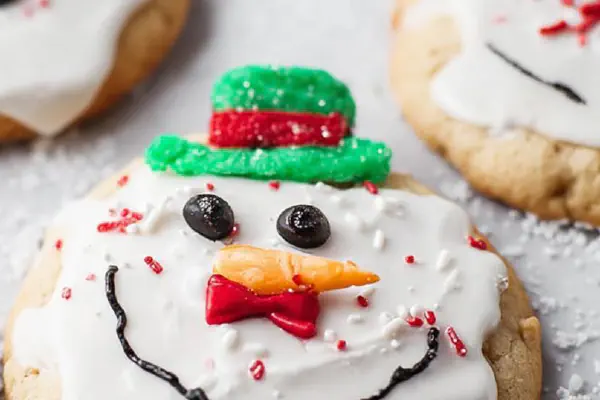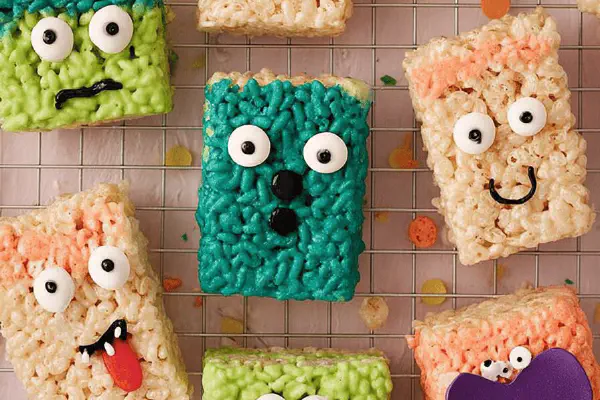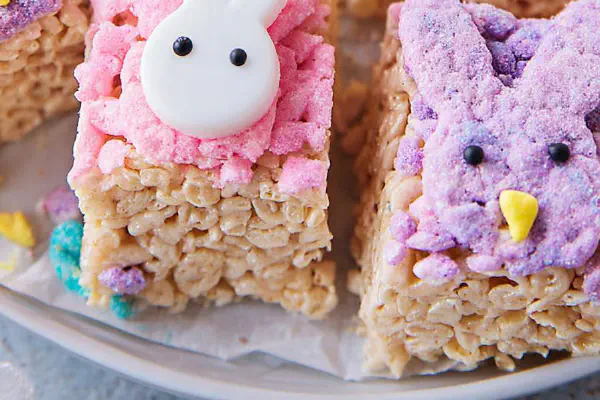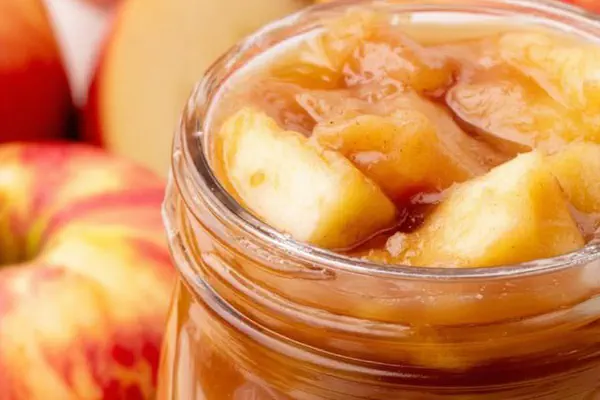Melted Snowman Cookies

By Emma
Certified Culinary Professional
Ingredients
- 1 package sugar cookie dough (approx 16 oz), sliced into 12 thick pieces
- Wilton Cookie Icing (tub), approx 1/2 cup
- 12 large marshmallows
- Candy buttons or colored candies for decoration
- Tubed cake frosting (white and colors)
- Cooking spray
- Optional twist ingredient: substitute butter for 2 tablespoons of coconut oil in dough before slicing
About the ingredients
Method
- Preheat oven as indicated on sugar cookie dough packaging, usually around 350°F. Slice dough evenly into 12 pieces, roughly 1/2 inch thick. Consistency here matters; if too thick they won’t puff right, too thin and too crispy.
- Lightly spray a large cookie sheet to avoid sticking. Place 6 dough slices spaced generously apart. Press each slice down with the palm to flatten irregularly — think puddles, uneven edges like melted ice. Not neat circles. This dough spreads, so unevenness is your friend.
- Slide into oven. Watch cookies closely starting around 10-11 minutes. Edges should brown lightly, centers still soft but holding shape. Avoid overbaking or they turn brittle and lose chew. Pull when the surface looks matte, a bit puffed but starting to settle. Cool on rack, repeat with remaining slices.
- Once cookies fully cooled (critical or icing slides off), set a baking rack over a cookie sheet to catch drips. Heat Wilton Cookie Icing in microwave in short bursts totaling about 25-30 seconds, massaging bottle between to warm evenly. Pour icing generously atop each cookie, letting some drip down edges for that melted look. No need for nozzle here — slow pour speeds it up.
- If adding candy buttons, stick them now directly onto still-wet icing. Cookie icing hardens solid, so add all decorations at once or you’ll need frosting glue later. Good time to plan placement; buttons, eyes, anything small getting trapped works best here.
- To create heads, spray a microwave-safe plate with cooking spray. Microwave 6 marshmallows for ~28 seconds, watch them swell just before going too hot. Pull at first puff, wait 5 seconds. Then push thumb into top to create dimple. Use white tubed frosting to spot-adhere marshmallow heads to cookie centers gently. Repeat for second batch.
- Time to decorate faces, arms, scarves — whatever. Tubed frostings with small plastic nozzles give control. Piping bags snipped fine for sharp details like twig arms or bow ties. Feel free to mix colors or double layer frosting for depth. This step brings cookie to life.
- Store completed cookies in a cool, dry place. Warm kitchens or humidity soften hardened icing and affect marshmallow texture. If that happens, a quick chill revives the firmness. If in doubt, layer wax paper between to prevent sticking.
Cooking tips
Chef's notes
- 💡 Slice dough evenly but don’t stress 1/2 inch exact. Slightly thicker helps hold chewiness, especially if dough fragile. Flatten with palm but keep uneven puddle shapes. Uneven edges help mimic melting snow. Press firmly but keep texture varied. Bake six at a time. Crowding changes bake temp, makes edges too dark or centers too raw. Watch visuals more than clock. Centers should be soft matte, edges just golden, never fully crisp.
- 💡 Microwave marshmallows short bursts. Around 28 seconds hits perfect puff—too long they turn rubbery and lose fluff. Pull right away, wait 5 seconds then dimple top with thumb. That dimple locks snowman head shape. Use cooking spray on plate or they stick and ruin that perfect texture. White tubed frosting is marshmallow glue. Use sparingly; a little dab holds well without mess or sliding down cookie.
- 💡 Warm cookie icing gently in short intervals. Overheat and it clogs flow, becomes thick. Pour fast, messy, no nozzle to get drippy edge effect. Icing sets solid, so decorate before it hardens. Candy buttons pressed into wet icing hold firm, skimping here means frosting glue later. If decorating later, be ready for extra work. Rapid freezing or chilling keeps icing firm longer but check marshmallow texture doesn’t get chalky or sticky.
- 💡 Use small nozzles or piping bags snipped fine for details—tiny twig arms, bow ties, scarf stripes. Multiple frosting colors help bring dimension but double layers add chew time. Thin layers toughen fast; thick layers keep moist but can mask cookie flavor. Frosting can bloom under warm or humid conditions—fix by quick fridge stop or blot with parchment paper. Keep extras for touchups; frosting cracks happen fast on dry cookies.
- 💡 Store cookies in dry cool spots, never humid areas. Moisture ruins crispy icing shells, softens candy buttons, mushes marshmallow heads. Use wax paper layered between cookies to avoid sticking. If humidity hits, fridge chilling tightens icing and refreshes marshmallow puff but don’t leave too long or cookie edges toughen. Reheat marshmallows gently if they flatten before serving, short microwave bursts only.
Common questions
How thick should cookie slices be?
Around half inch works best but slight variations okay. Thicker stays chewy but risks being underbaked inside. Thin slices get crispy fast. Watch edge color; once golden pull out. Center soft matte means done even if jiggles slightly.
Best way to attach marshmallows?
Dab white tubed frosting on cookie center. Use just a tiny drop. If too wet, marshmallow slides or icing melts. Marshmallow cooling right after microwave is crucial. Dimples hold shape in place for easier attachment without squishing marshmallow.
Candy buttons fall off after baking?
Press into fresh wet icing immediately after pouring. Wait for icing to firm solid before moving cookies. If candy falls off later, use frosting glue but that’s hassle. Other options—mini M&Ms or sprinkles stuck quick before icing hardens.
How to store to keep textures?
Layer wax paper between cookies in an airtight container. Cool and dry place best. Humidity ruins icing crispness fast. Refrigerate briefly if humidity high but watch marshmallow texture doesn’t dry out. Can reheat marshmallows fast microwave bursts before serving.



